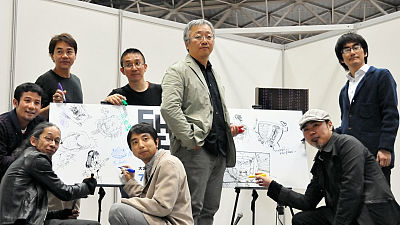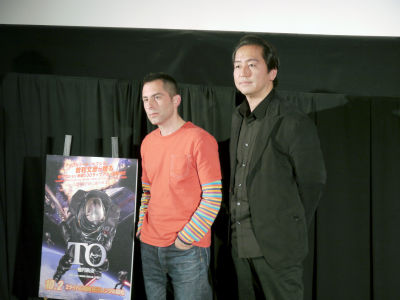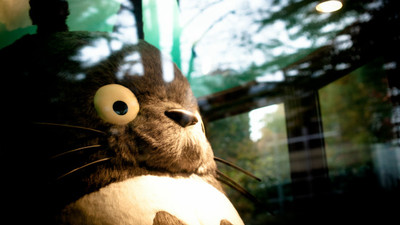Completion of Celtic trilogy following 'Wolfwalkers' director interview, 'The Secret of Kells and Brendan' and 'Song of the Sea Umi no Uta'

'
This time, I had the opportunity to interview Tom Moore and Ross Stuart, who co-directed the work, so I asked him how he made this work.
Movie 'Wolfwalkers' official site
https://child-film.com/wolfwalkers/
GIGAZINE (G):
In the interview video recorded on the Blu-ray of the director's previous work 'Song of the Sea Umi no Uta', there was a statement about the next work, that is, 'I'm already making it'. There was information on the official movie website that the concept was 7 years, but what was the original idea?
Director Tom Moore (hereinafter Moore) :
One day when I was involved in the creation of 'Song of the Sea Umi no Uta' with Ross, I had a chat while eating lunch, 'What should I do next?' The themes we were interested in were about old legends and history. Then, from the question, 'Why don't you set the stage in this town called Kilkenny where we grew up?', The problem that biodiversity has been lost and the friendship that transcends various differences. I came up with the theme that it might be possible.
G:
So that's it. In Cartoon Saloon, he produced three works, 'The Secret of Kells and Brendan,' 'Song of the Sea, Umi no Uta,' and 'Wolfwalker,' which are described as Celtic trilogy, and 'Breadwinner' in between. I feel that the overall quality is improving with each work. Where did you decide to raise the level in this work? Or are you changing some of the different criteria?

Moore:
I think that this work is evolving because the part that 'made jointly' is different. This time I co-directed with Ross, but by doing it with him, I was able to do things that I couldn't do alone. From every point of view, I think his participation made this work better. For example, Ross's unique perspective has raised the bar for storytelling and background painting quality. Also, depending on the scene, I was able to change the way the lines are drawn, and to create the world seen by the wolf, which is called 'Wolf Vision,' in 3D, even though it is a hand-drawn animation. .. I feel that this work has made a technical attempt that I wanted to do in the past but couldn't.
G:
Ross is the technical director of 'The Secret of Kells and Brendan' and co-director of the film. Did you share any roles in this 'co-director'?
Moore:
This 'co-supervision' was a completely equal collaboration. In the case of 'The Secret of Kells and Brendan,'
G:
So that's it. I was surprised that the flow of the story goes in a direction that I can not imagine at all from the middle of this work, but how long did it take to complete the script?

Moore:
I spent the most time on the script.
Director Ross Stuart (Stuart):
Sure, I spent the most time on the script. I came up with this story seven years ago, then rewrote the synopsis several times, spent about a year repeating various ideas, and finally completed the script three years ago. In the

G:
I heard that you first talked about making a work set in Kilkenny, but in this work, what part is the legend that is actually handed down in Kilkenny, and which part is the original creative part. Is it? In the case of 'Song of the Sea Umi no Uta,' the original part was that the owl witch, Maka, took away her emotions and sealed it in the bottle.
Stuart:
The part about wolf humans is based on legend. There is a legend in Kilkenny that once a family was transformed into a wolf while sleeping by the blessing or curse of

Moore:
In the original legend, there was no element such as 'Wolf humans increase the number of wolf humans by biting other humans.' There, resulting in the people you bite to cognate, German Werewolf of incorporating the elements of the legend has become a cornerstone of this work.
G:
In this work, none of the characters have 'clear malicious intent', and each of them chooses the best for someone they think, and as a result, pushes toward the worst event. I felt that the feeling was very real. In the same way in the past works, there was a common point that 'what I thought was good led to a completely bad result', but is this intentional? Or did it happen by accident when making the work?
Moore:
I am very happy to have this question asked. It was a very delicate and difficult process in the process of rewriting the script. Especially how to draw a person named Lord Protector. Lord Protector is the only person in this movie who is described as a 'bad guy.' I couldn't quite explain why he was doing that, so it's easier for him to look like a bad guy. But I've been thinking that everybody in the movie is a hero and sticks to what he thinks is right. There's a reason for anyone doing anything terrible, and unless it's a so-called psychopath, everyone sticks to what they believe. That is the part I was conscious of.
Stuart:
I think it's a very interesting question. Lord Protector is modeled after Oliver Cromwell. Cromwell is a pretty violent person who killed many people in the name of 'civilizing Ireland'. But from the other side, especially from the British side, he is considered to be the driving force behind the democratic nation, even a statue standing in the center of London. So, a person who is a hero to one person can be a villain to another person, and whether or not he is a villain depends on how he sees things, and for himself he is a hero. Or it could be a hero from the perspective of others. I think that similar problems can be seen and hidden in modern politics.

G:
Compared to human characters, wild animals feel very lively. Looking at the picture, it is not a realistic shape, but the skeleton is considerably deformed, but I wonder why it feels like 'moving realistically', but what kind of movement did the director do? Are you paying attention to the points?
Stuart:
From the beginning, I wanted to draw a contrast. While it is depicted that the people of the city have some kind of oppression and shackles and live in a cage, wolves and wild animals are intuitive and free. We live as we wish. To contrast these two worlds, I was particular about character design and how to move the animation. For example, in order to depict the world of a free forest, I was conscious of the energy that reflects the flow of water and the movement of water in the design, and made full use of technology. While the rigor of physical movement as a physical body is one with the wolves, the wolves as a group expand and contract in the shape of teardrops, depending on how they move. I drew the freedom of the creatures living inside and the feeling of liberation that I was at my disposal.
G:
In an interview with 'Song of the Sea Umi no Uta'
Moore:
There is almost no difference from the work process of the previous work. There were some details and a variety of techniques, but even in 'Song of the Sea Umi no Uta', the town was ink, the forests and mountains were pencils, and more watercolor. There is a basic pattern such as using paint for both, and it is developed in the same way in this work. We have also created a character guide that can be shared by artists who do not work in the same field like France and Luxembourg. This work was born by accumulating what I learned in 'Song of the Sea Umi no Uta'.
G:
So that's it.
Stuart:
A feature of 'Wolf Walker' that is not in the previous work is that it depicts the wolf's perspective called 'Wolf Vision'. I think that only this scene was different from the normal work flow. I worked on it by hand, as if I were making an independent short film. Aimin McNamara , a genius who is also a director and animator, contributed greatly to this work. The Wolf Vision scene worked on Previs .
G:
Similarly, in an interview with the previous film when it was released in Japan , Moore said, 'Many critics in Europe have compared it to'like Japanese anime'.' However, when you actually look at the work, it seems that Cartoon Saloon's work has a different personality from Japanese animation. What are your thoughts on what was compared to 'like Japanese anime'?
Moore:
It may be that many Japanese animations have long been particular about hand-drawn animation. Even after moving to CG in the West, I think that hand-painting has been emphasized in Japan. Also, Studio Ghibli is the most famous Japanese animation studio in the West, but the themes of 'environmental problems' and 'growth of young people' that appear in my work have something in common with Studio Ghibli's work. maybe. In that respect, it would have been the feeling of European critics that it was closer to Japanese anime than Pixar or Disney.
G:
So that's it. Thank you for talking to us today.

The movie 'Wolfwalker' will be a national road show including YEBISU GARDEN CINEMA from October 30, 2020 (Friday).
There is a subtitled version and a dubbed version. In the dubbed version, the role of Robin, a hunter apprentice girl, and Niitsu, who is a member of Foorin known for singing 'Paprika ' and is known for the role of Momo Kawamoto in the movie 'March Comes In Like Lion'. Chise is in charge.
Robin role, Chise Niitsu:
I love all of Cartoon Saloon's works, which are full of mysterious beauty and vitality, so I'm very excited now!
We want many people to see Robin, who values friendship and promises and finds a way for humans and wolves to live together.
I'm always on good terms with Lirico, who plays the role of Medb, so I'll do my best to post-record together!
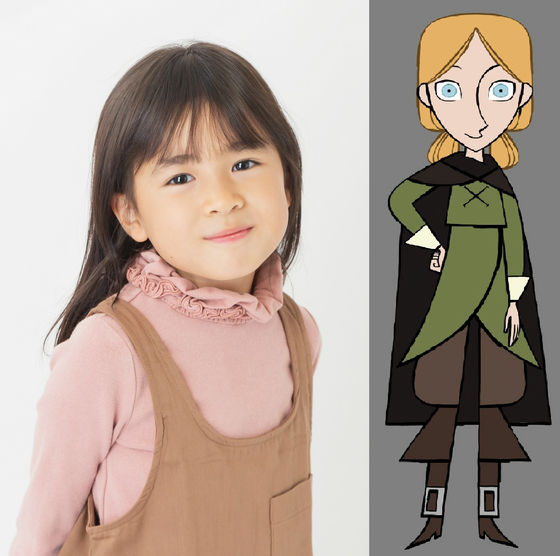
The role of 'Wolfwalker' Mave is Ririko Ikeshita, who is the same member of Foorin as Mr. Niitsu and is active in movies, theatrical performances, and dramas.
Mave, Ririko Ikeshita:
I love Medb, who is compassionate, free-spirited, and cherishes every moment.
I admire Mave who is positive about everything!
That's why I'm very happy to be able to play Medb! ️
I'm on good terms with Chise, who plays Robin, so I'll do my best together!
I want to convey it powerfully with the hope that people can get along with nature! ️
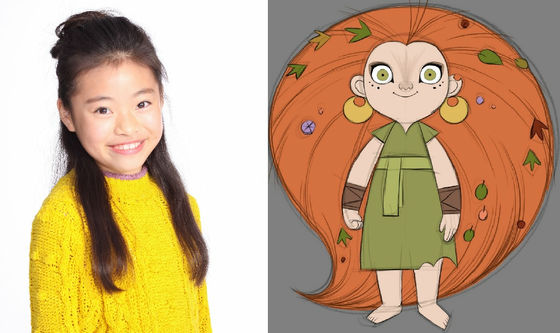
Robin's father, Wolf Hunter Bill, is played by Arata Iura, an actor who is active in commercials, movies, and dramas.
Arata Iura, the role of Bill:
Cartoon Saloon lets you discover works that give you a sense of the depth of history and culture, and the greatness of nature.
While enjoying the view of the world, I would like to play Bill with all my heart.
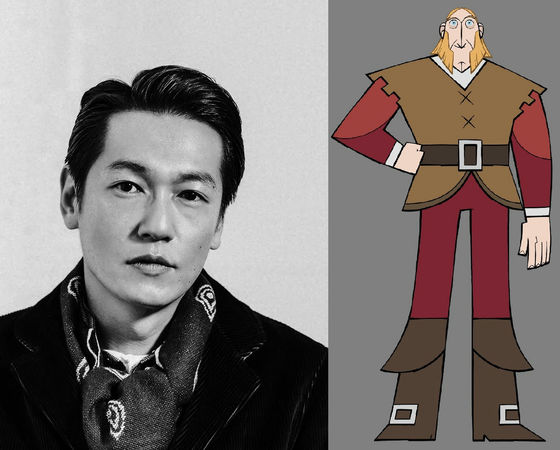
© WolfWalkers 2020
Distribution: Child Film
Related Posts:
